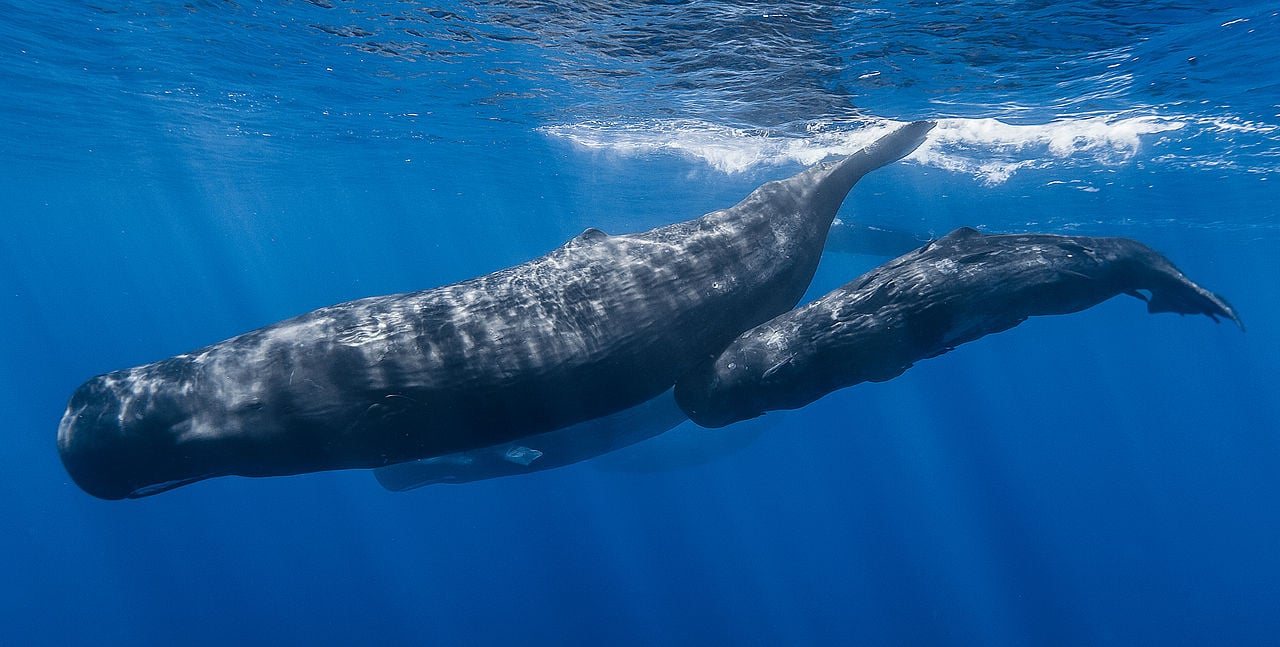
Recently, the head of the Institute of Animal Health and Food Security at the University of Las Palmas was stunned to discover approximately half a million dollars worth of ambergris inside a dead sperm whale that had washed up on the shores of La Palma, one of the Canary Islands.
Throughout history, this valuable substance, which is only produced by sperm whales, has been used for a variety of purposes, often coming at a premium price. Now, however, it has been deemed illegal in many parts of the world.
But what exactly is ambergris, also known as “floating gold”, and why can it be found inside sperm whales?
What an incredible photograph. Gulliver would be proud. Academics inspecting a dead sperm whale in Las Palmas. An autopsy found a 9.5kg lump of Ambergris in its colon, worth £500,000
Photograph: Universidad de Las Palmas de Gran Canaria.
Source: Stuart White pic.twitter.com/m06M1cnhC7
— Johnno Maxwell (@MaxMaxWriter) July 4, 2023
Ambergris: the “floating gold” of sperm whales
Ambergris is a dense, wax-like material with a hue ranging from dull grey to blackish. It is formed within the digestive tract of sperm whales and possesses flammable properties.
When newly formed, ambergris emits a distinctive odor reminiscent of the sea and faeces. However, as it matures, it develops a pleasant, earthy aroma often compared to the fragrance of isopropyl alcohol, but without the sharp chemical undertones.
The scientific theory surrounding ambergris suggests that sperm whales consume significant quantities of cephalopods, including squid and cuttlefish. Normally, indigestible elements like beaks and pens are expelled through vomiting before digestion. However, in rare cases, these parts bypass that process and bind together within the whale’s intestines, gradually forming a solid mass of ambergris over the course of several years.

It is hypothesized that ambergris acts as a protective mechanism, safeguarding the whale’s internal organs from the sharp squid beaks.
Ambergris is typically excreted from the whale’s body in a similar way to faecal matter. There is speculation that if the ambergris mass becomes too large to pass through the intestines, it may be expelled through the mouth, although this remains a topic of debate. Indeed, scientist Christopher Kemp has dismissed the theory that sperm whales vomit ambergris.
Another theory suggests that the presence of intestinal worms and cephalopod parts could lead to a blockage in the whale’s colon, causing the whale’s demise and resulting in the expulsion of the ambergris mass into the sea.
Uses and value
How did ambergris, essentially a waste product produced by sperm whales, earn the nickname “floating gold”?
Ambergris, renowned for its resemblance to musk, has predominantly been employed in the creation of perfumes and fragrances, with some perfumes still incorporating it today. However, its applications extend beyond the realm of scent.
Throughout history, ambergris has found usage in the culinary world. King Charles II of England, for instance, favored a dish consisting of eggs and ambergris. In the mid-19th century, a recipe for Rum Shrub liqueur included a hint of ambergris alongside ingredients like rum, almonds, cloves, cassia, and orange peel, resulting in a flavorful cocktail according to The English and Australian Cookery Book. Turkish coffee and 18th-century European hot chocolate have also been enhanced with the addition of ambergris as a flavoring agent.

Beyond its gastronomic uses, ambergris has played diverse roles in different cultures. Ancient Egyptians burned it as incense, while in modern Egypt, it is used to scent cigarettes. In ancient China, it was referred to as “dragon’s spittle fragrance.”
Remarkably, during the time of the Black Death in Europe, people believed that carrying a ball of ambergris could ward off the plague. It was thought that the fragrance of ambergris masked the noxious air associated with the disease.
In the Middle Ages, Europeans also turned to ambergris as a medicinal remedy for various other conditions, including headaches, colds, epilepsy, and other ailments. Its perceived therapeutic properties led to its use in traditional medicine during that era.
Today, The Guardian reports that the highest quality ambergris can be worth as much as $27 per gram. Sometimes large clumps of the substance are discovered that are worth well over $1 million. Meanwhile, perfumes that incorporate ambergris are sometimes sold for about $500.
Legal status
The legality of ambergris varies depending on the country and region. For example, in the UK and the EU, it is legal to collect and sell ambergris found on beaches. The EU considers ambergris to be a benign byproduct, not covered by the ban on whale products.
However, in the US and Australia, possession and trade of ambergris are prohibited. The US considers it a “grey area” as a waste product that can be salvaged without harming whales, while Australia regulates its export and import as a whale product under environmental protection laws.
See all the latest news from Greece and the world at Greekreporter.com. Contact our newsroom to report an update or send your story, photos and videos. Follow GR on Google News and subscribe here to our daily email!



